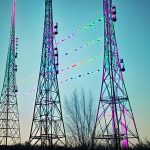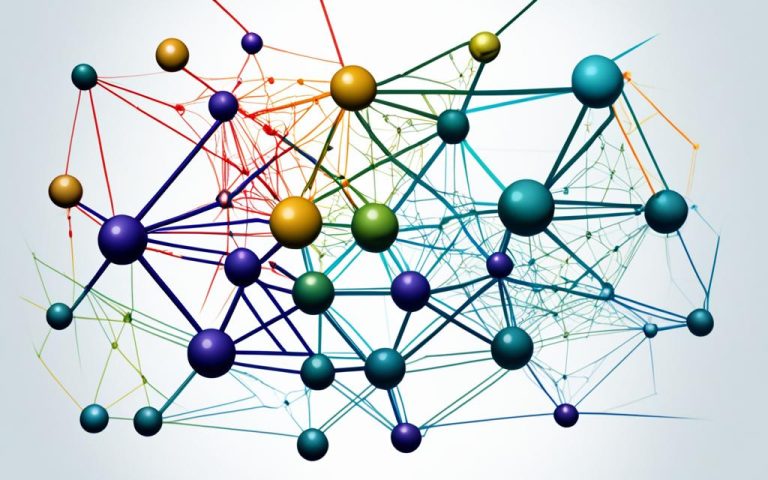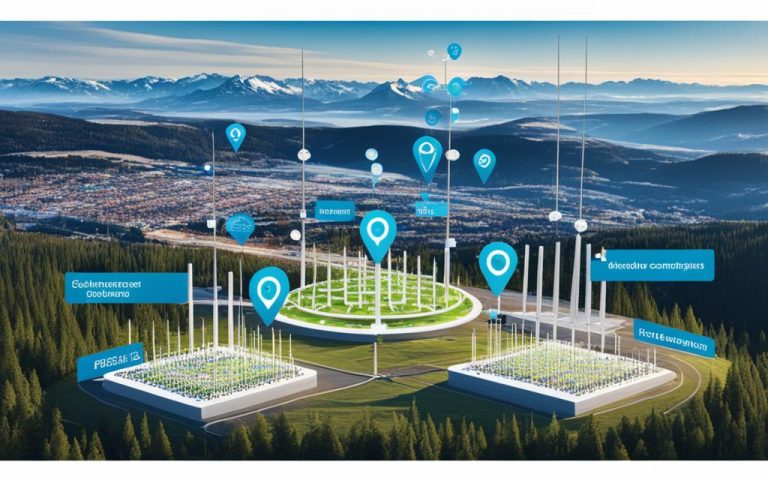In today’s fast-paced digital world, the demand for high-speed and reliable wireless connectivity is ever-increasing. This demand has led to the development of fixed wireless networks that offer a viable alternative to traditional wired networks.
However, ensuring efficient and optimal utilization of the limited spectrum resources is a constant challenge for network operators and service providers. This is where Dynamic Spectrum Access (DSA) comes into play.
DSA refers to the process and mechanisms that allow different radio access networks and terminals to dynamically access overlapping spectrum bands while minimizing interference and complying with regulatory rules. By utilizing DSA, fixed wireless networks can significantly enhance their efficiency by intelligently allocating and sharing spectrum resources.
DSA can be achieved through negotiation or without negotiation, depending on the specific implementation. Regardless of the approach, the key goal of DSA is to enable real-time adjustment of radio resources for optimal spectrum utilization.
With DSA, these networks can tap into underutilized spectrum bands, maximizing spectral efficiency and minimizing interference violations. This is made possible by leveraging the concept of cognitive radio, which allows for opportunistic spectrum transmission.
DSA has several advantages, including improved spectrum efficiency, increased spectrum utilization, and the ability to efficiently allocate spectrum within and across different wireless systems. It finds applications in various wireless communication systems, such as cellular networks, public safety networks, and ad hoc wireless local area networks.
By embracing Dynamic Spectrum Access, fixed wireless networks can unlock their full potential, delivering faster and more reliable connectivity to meet the growing demands of businesses and consumers alike. The efficient allocation and sharing of spectrum resources made possible by DSA not only enhance network performance but also contribute to driving technological innovation and maintaining U.S. leadership in wireless markets.
What is Dynamic Spectrum Access?
Dynamic Spectrum Access (DSA) is a process that increases spectrum efficiency by adjusting radio resources in real-time. This adjustment involves local spectrum sensing, probing, and the autonomous establishment of wireless connections among cognitive nodes and networks. The concept of cognitive radio, which allows for opportunistic spectrum transmission, is key to DSA. It enables secondary users to access underutilized spectrum holes of primary users, thereby increasing overall spectral efficiency while minimizing interference violations.
Advantages of Dynamic Spectrum Access
Dynamic Spectrum Access (DSA) offers several advantages that enhance spectrum efficiency, promote spectrum utilization, and drive technological innovation. By enabling real-time adjustment of radio resources, DSA optimizes the allocation and utilization of available spectrum, resulting in improved wireless network performance and reduced interference.
One significant advantage of DSA is its ability to facilitate the opportunistic use of underutilized spectrum. By efficiently identifying and accessing available spectrum gaps, DSA maximizes spectrum utilization and allows for the dynamic allocation of resources. This ensures that valuable spectrum resources are not left unused, enhancing overall spectral efficiency.
“Dynamic Spectrum Access maximizes spectrum utilization by opportunistically using underutilized spectrum.”
Additionally, DSA can be applied to the secondary use of spectrum allocated for other purposes. For example, in ad hoc wireless local area networks (WLANs), DSA enables the utilization of unlicensed spectrum, empowering devices to communicate with each other without requiring a dedicated spectrum allocation. This flexible spectrum access promotes innovation and fosters the development of new wireless applications and services.
Moreover, DSA promotes the efficient use of spectrum within and across different wireless systems. By dynamically adapting to the changing spectrum environment, DSA optimizes spectrum allocation and ensures efficient spectrum sharing between primary and secondary users. This not only enhances spectrum efficiency but also mitigates interference, allowing different wireless systems to coexist harmoniously.
“Dynamic Spectrum Access optimizes spectrum allocation and enhances spectrum efficiency while minimizing interference.”
Advantages of Dynamic Spectrum Access
The following table highlights the key advantages of Dynamic Spectrum Access:
| Advantages |
|---|
| Enhances spectrum efficiency |
| Maximizes spectrum utilization |
| Enables opportunistic use of underutilized spectrum |
| Supports secondary use of spectrum in ad hoc wireless local area networks |
| Promotes efficient spectrum use within and across different wireless systems |
Applications of Dynamic Spectrum Access
Dynamic Spectrum Access (DSA) plays a pivotal role in the field of wireless networks, offering a range of applications that enhance spectrum efficiency and improve overall network performance. One of the key areas where DSA proves particularly relevant is in cognitive radio networks.
Cognitive radio networks refer to systems that employ intelligent algorithms and capabilities to dynamically access available spectrum. DSA enables these networks to facilitate the efficient utilization of spectrum resources by allowing secondary users to access spectrum holes of primary users. This concept is vital, especially in scenarios where there is a shortage of spectrum resources.
DSA finds application in various wireless communication systems, including:
- Cellular networks
- Public safety networks
- Wireless local area networks (WLANs)
These networks benefit from DSA’s ability to optimize spectrum usage and mitigate interference, ultimately improving overall network performance and user experience.
For a visual representation of the applications of DSA in wireless networks, refer to the following table:
| Wireless Network Type | Applications of Dynamic Spectrum Access |
|---|---|
| Cellular networks | Optimizing spectrum allocation, maximizing network capacity |
| Public safety networks | Enhancing emergency response capabilities through efficient spectrum utilization |
| Wireless local area networks (WLANs) | Enabling dynamic spectrum sharing and improved network performance |
By leveraging Dynamic Spectrum Access, wireless networks can achieve significant improvements in spectrum efficiency, leading to enhanced network performance, increased capacity, and improved user satisfaction.

Conclusion
The implementation of Dynamic Spectrum Access (DSA) is crucial for enhancing the efficiency of fixed wireless networks and promoting spectrum utilization. By enabling the effective allocation and sharing of spectrum resources, DSA maximizes the benefits of wireless technologies. This innovative approach allows for real-time adjustment of radio resources, increasing spectrum efficiency and improving overall spectral utilization.
To ensure the success of DSA, collaboration between government agencies, industry stakeholders, and regulatory bodies is paramount. It is essential to establish clear spectrum policies that address spectrum allocation, interference management, and spectrum sharing guidelines. With a well-defined framework in place, we can drive technological innovation and maintain U.S. leadership in wireless markets.
Embracing Dynamic Spectrum Access not only enhances the efficiency of fixed wireless networks but also promotes the optimal use of limited spectrum resources. It is a game-changer in the field of wireless communications, enabling secondary users to access underutilized spectrum bands and maximizing spectrum utilization. By leveraging DSA, we can pave the way for a more connected future, where wireless technologies empower businesses, industries, and individuals.
FAQ
What is Dynamic Spectrum Access?
Dynamic Spectrum Access (DSA) refers to the process and mechanisms that allow different radio access networks and terminals to dynamically access overlapping spectrum bands. This access is done while minimizing interference and following regulatory rules. DSA can be achieved through negotiation or without negotiation. DSA is crucial for enhancing the efficiency of fixed wireless networks.
How does Dynamic Spectrum Access enhance spectrum efficiency?
Dynamic Spectrum Access is a process that increases spectrum efficiency by adjusting radio resources in real-time. This adjustment involves local spectrum sensing, probing, and the autonomous establishment of wireless connections among cognitive nodes and networks. The concept of cognitive radio, which allows for opportunistic spectrum transmission, is key to DSA. It enables secondary users to access underutilized spectrum holes of primary users, thereby increasing overall spectral efficiency while minimizing interference violations.
What are the advantages of Dynamic Spectrum Access?
Dynamic Spectrum Access offers several advantages. It enhances spectrum efficiency by enabling real-time adjustment of radio resources. It allows for the opportunistic use of underutilized spectrum, maximizing spectrum utilization. DSA can be applied to secondary use of spectrum allocated for other purposes, such as in ad hoc wireless local area networks. It also promotes the efficient use of spectrum within and across different wireless systems, enhancing overall spectrum utilization.
What are the applications of Dynamic Spectrum Access?
Dynamic Spectrum Access has various applications in the field of wireless networks. It is particularly relevant in cognitive radio networks, where it enables secondary users to access spectrum holes of primary users. This concept is crucial for improving spectrum efficiency, especially in scenarios with a shortage of spectrum resources. DSA can be used in various wireless communication systems, including cellular networks, public safety networks, and wireless local area networks.
Why is the implementation of Dynamic Spectrum Access important?
The implementation of Dynamic Spectrum Access is essential for enhancing the efficiency of fixed wireless networks and promoting spectrum utilization. It enables the effective allocation and sharing of spectrum resources, maximizing the benefits of wireless technologies. To ensure its success, collaboration between government agencies, industry stakeholders, and regulatory bodies is crucial. By embracing DSA, we can drive technological innovation, improve spectrum efficiency, and maintain U.S. leadership in wireless markets.



















